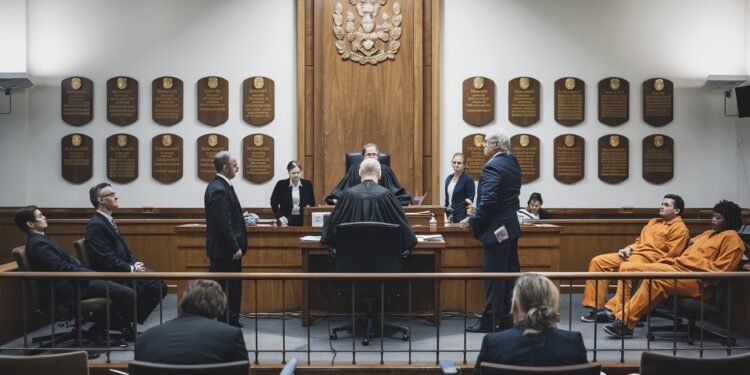Author- Riya, BCOM.LLB
Introduction
The case of BK Educational Services Private Limited v. Parag Gupta & Associates (2018) marks a significant turning point in the interpretation and application of the Insolvency and Bankruptcy Code, 2016 (IBC). The Supreme Court of India, in this landmark decision, clarified the applicability of the Limitation Act, 1963 to proceedings under the IBC, resolving considerable ambiguity in the law. This judgment not only reinforced the principles of timely resolution of disputes but also upheld the sanctity of the statute of limitations. The decision carries wide-ranging implications for creditors, corporate debtors, and the overall insolvency framework in India.
Case Details
Background of the Case
BK Educational Services Private Limited, the appellant, faced an insolvency petition filed by Parag Gupta & Associates, the operational creditor. The dispute revolved around whether the Limitation Act, 1963, applies to applications filed under Sections 7 and 9 of the IBC. The National Company Law Appellate Tribunal (NCLAT) had previously ruled that the Limitation Act does not apply to such proceedings. This interpretation led to the appellant’s challenge before the Supreme Court.
Key Legal Issues
- Applicability of Limitation Act: Whether the provisions of the Limitation Act, 1963, are applicable to insolvency proceedings initiated under the IBC.
- Date of Default: Whether claims that are time-barred under the Limitation Act could still be admitted under the IBC.
Judgment
The Supreme Court, in a comprehensive judgment, overruled the NCLAT’s interpretation and held that the Limitation Act is applicable to applications under Sections 7 and 9 of the IBC. The Court emphasized that the IBC is not meant to revive stale claims and that the time frame for initiating insolvency resolution must be strictly adhered to.
Key observations made by the Court included:
Purpose of the IBC: The primary objective is the resolution of insolvency within a fixed time frame, not the recovery of debt.
Applicability of Limitation Act: Section 238A of the IBC explicitly makes the Limitation Act applicable to proceedings under the Code.
Public Policy: Allowing time-barred claims would defeat the purpose of the Limitation Act and undermine the efficiency of the IBC process.
Problems in Legal Matter
Ambiguity in Law
Prior to this judgment, the absence of clarity on the applicability of the Limitation Act created confusion among stakeholders. Different interpretations by various tribunals undermined the uniform application of the IBC.
Stale Claims
The lack of a definitive ruling led to the admission of stale claims, which defeated the IBC’s goal of swift resolution. Creditors often sought to exploit this ambiguity, resulting in delays and increased litigation.
Judicial Overload
The uncertainty contributed to an influx of cases in the judicial system, with parties frequently challenging decisions on limitation grounds. This increased the burden on the already overburdened judiciary.
Positives of the Judgment
Clarity and Certainty
The judgment brought much-needed clarity regarding the applicability of the Limitation Act to IBC proceedings. This ensures consistency in the treatment of claims and applications under the Code.
Encouragement of Timely Actions
By emphasizing adherence to the limitation period, the judgment incentivizes creditors to act promptly, reducing the risk of disputes arising from delayed claims.
Streamlining the Insolvency Process
The decision aligns the IBC with its objective of time-bound resolution of insolvency, enhancing the efficiency of the insolvency framework and boosting investor confidence.
Prevention of Abuse
The ruling curtails attempts to misuse the IBC for recovering time-barred debts, thereby preserving the integrity of the insolvency resolution process.
Future Implementations : Resultant to the case
Strengthening Insolvency Framework
The judgment reinforces the importance of timelines, ensuring that the IBC remains a robust tool for resolving insolvency efficiently. This paves the way for further legislative and procedural refinements to enhance the Code’s effectiveness.
Better Due Diligence
Creditors are now more likely to conduct timely audits and maintain proper documentation of debts. This promotes discipline in financial transactions and record-keeping.
Judicial Precedent
This ruling serves as a critical precedent for future cases, reducing the scope for conflicting interpretations of limitation-related issues under the IBC.
Increased Awareness
The judgment underscores the significance of legal timelines among creditors and other stakeholders, fostering greater awareness of their rights and obligations.
Shortcomings of the Judgment
Rigid Timelines
While the emphasis on timelines is beneficial, it may disadvantage creditors with genuine claims that are time-barred due to unavoidable circumstances. This rigidity could lead to unjust outcomes in certain cases.
Lack of Comprehensive Guidance
The judgment does not provide detailed guidance on exceptions or situations where the limitation period could be extended, such as cases involving fraud or concealment of facts.
Challenges for Operational Creditors
Operational creditors, who often lack the resources and expertise to track limitation periods meticulously, may face difficulties in pursuing claims under the IBC.
Conclusion
The Supreme Court’s judgment in BK Educational Services Private Limited v. Parag Gupta & Associates is a watershed moment in the evolution of the IBC. By affirming the applicability of the Limitation Act, the decision enhances the predictability and efficiency of the insolvency process. However, its rigid application may occasionally result in inequitable outcomes for genuine creditors.
To bring about more comprehensive change in the legal system, the judgment could have been accompanied by directives for addressing exceptional cases and procedural delays. Future reforms might focus on balancing the need for strict timelines with the equitable treatment of creditors, ensuring that the IBC continues to fulfill its twin objectives of insolvency resolution and economic growth.
Closing Note
While the judgment provides much-needed clarity, there is room for further improvements that could strengthen the legal framework. For instance, the judgment could have included detailed guidelines for handling cases where the limitation period has lapsed due to exceptional circumstances. Such provisions could address instances of fraud, coercion, or other unavoidable delays that prevent creditors from initiating proceedings within the prescribed time. This would align the rigid timelines with principles of equity and justice.
Additionally, a more nuanced approach to operational creditors could be beneficial. Many operational creditors lack sophisticated legal and financial mechanisms to monitor claims within limitation periods. The introduction of specific safeguards or awareness programs for operational creditors would create a more inclusive and equitable system.
The judgment also highlights the need for legislative refinements to ensure that creditors’ rights are not unduly compromised. For example, amendments to allow for discretionary extensions of limitation in deserving cases, subject to judicial scrutiny, would be a welcome change. These provisions could be modeled on existing exceptions under the Limitation Act for cases involving fraud or mistake.
Furthermore, the judiciary could work towards developing a robust jurisprudence on related aspects, such as the interplay of the Limitation Act with other provisions of the IBC. This would address potential ambiguities and ensure a holistic approach to insolvency law.
Lastly, the case underscores the importance of digitization and automation in tracking claims and defaults. Policymakers should consider mandating digital reporting mechanisms for financial transactions, which could aid creditors in identifying potential defaults and initiating proceedings promptly. Such technological advancements would not only reduce delays but also minimize human errors in tracking limitation periods.
In conclusion, while the judgment is a step in the right direction, its impact could be further amplified with complementary legislative and procedural reforms. A balanced approach that enforces strict timelines while accommodating genuine hardships would ensure that the IBC
continues to serve as a cornerstone of India’s insolvency regime. The judgment, thus, sets the stage for a more comprehensive and just insolvency framework in the years to come.



